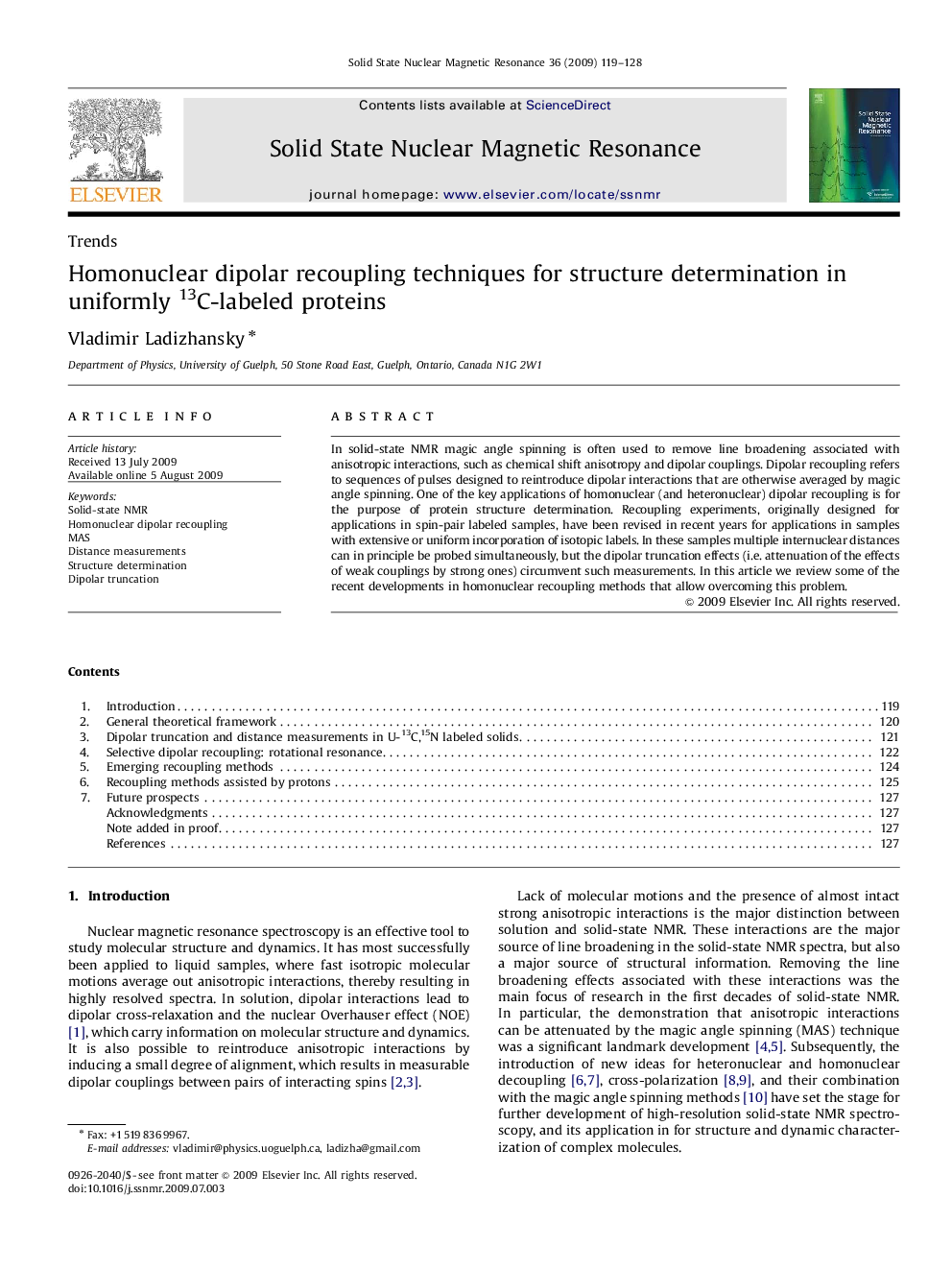| Article ID | Journal | Published Year | Pages | File Type |
|---|---|---|---|---|
| 5420785 | Solid State Nuclear Magnetic Resonance | 2009 | 10 Pages |
Abstract
In solid-state NMR magic angle spinning is often used to remove line broadening associated with anisotropic interactions, such as chemical shift anisotropy and dipolar couplings. Dipolar recoupling refers to sequences of pulses designed to reintroduce dipolar interactions that are otherwise averaged by magic angle spinning. One of the key applications of homonuclear (and heteronuclear) dipolar recoupling is for the purpose of protein structure determination. Recoupling experiments, originally designed for applications in spin-pair labeled samples, have been revised in recent years for applications in samples with extensive or uniform incorporation of isotopic labels. In these samples multiple internuclear distances can in principle be probed simultaneously, but the dipolar truncation effects (i.e. attenuation of the effects of weak couplings by strong ones) circumvent such measurements. In this article we review some of the recent developments in homonuclear recoupling methods that allow overcoming this problem.
Related Topics
Physical Sciences and Engineering
Chemistry
Physical and Theoretical Chemistry
Authors
Vladimir Ladizhansky,
